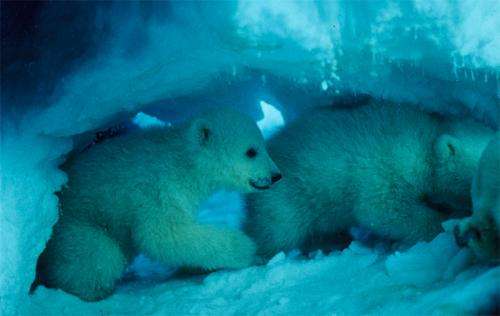Credit: Thor S. Larsen / Norwegian Polar Institute
Every autumn, in the Arctic archipelago of Svalbard, polar bears build dens to give birth and nurse their young through the first days of life. Knowing how many cubs are born – and where their dens are located – is critical to understanding the status of the bears as they face a future of rapidly decreasing ice.
When the polar bears of Svalbard venture from their dens this year, a joint expedition of WWF-Canon and the Norwegian Polar Institute will be there to observe how the bears are adapting to changing sea ice conditions.
The WWF-Canon expedition comes only weeks after the maximum extent of Arctic sea ice was found to be at its fifth lowest level in the satellite record. A recently published paper also suggests that the Svalbard expedition area will be ice-free in summer by 2050.
"We don't know what the future holds for these bears," said Geoff York, WWF lead on polar bears. "We do know that bear populations deprived of sea ice for significant amounts of time are less likely to survive or breed successfully."
There is some evidence that the Svalbard population is moving away from traditional denning sites on the Norwegian islands. The bears need to be close to sea ice to hunt when they emerge from their dens. One possibility is that they are moving further east where the ice survives longer.
"For WWF, this is important work to understand how many cubs were born last winter and where they were born," said Gert Polet, an Arctic expert with WWF-Netherlands. "We want to see how polar bears use an area that is encountering such rapid change because of melting and shifting sea ice."
NPI researchers will place satellite collars on female bears so that they can track their travel over the next year. Comparing the position of the bears to satellite information about the sea ice will help explain how polar bears are responding to ice conditions and how they might adapt to future changes.
Four of the bears collared during the expedition can be followed on WWF's polar bear tracker as soon as the satellite collars are activated. The NPI and WWF-Canon expedition runs from April 11 through April 21 and can be followed at panda.org/svalbard.
Provided by WWF























